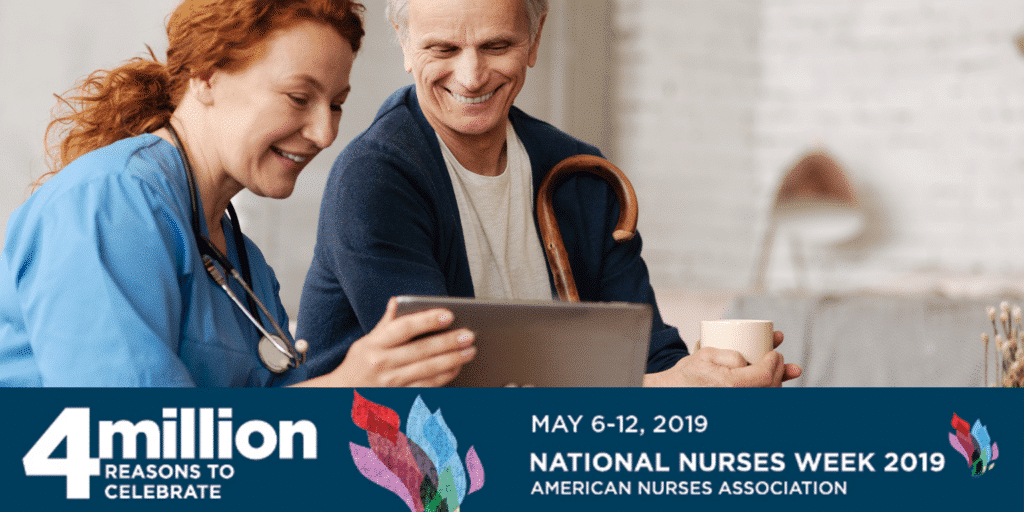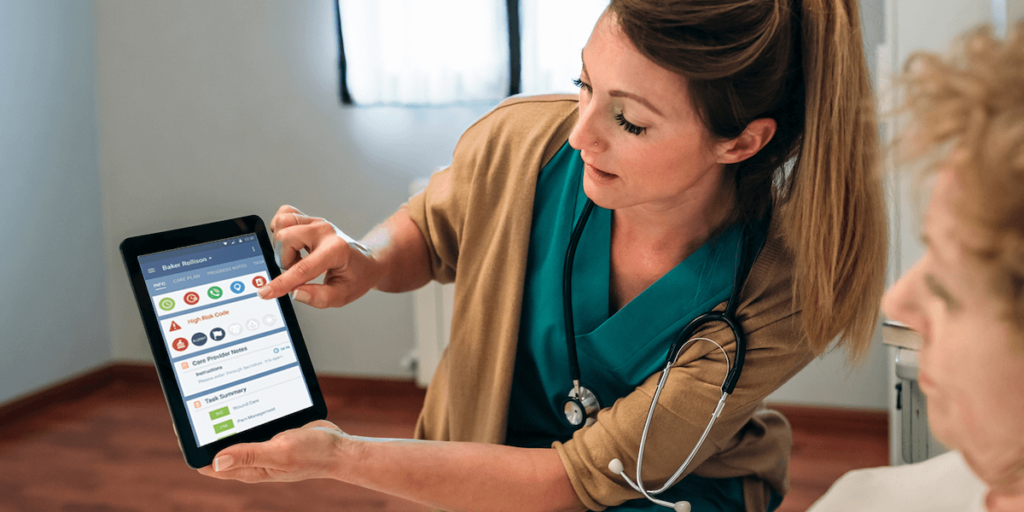Blog
Nurse Appreciation Through the Power of Technology

Each year, National Nurses Week acknowledges the challenging job of nursing and provides an opportunity to let the four million registered nurses in the U.S. – and the millions more around the globe – know that their hard work is recognized and appreciated.
Celebrated for more than 40 years, this week is also an opportunity to call attention to the increasing stress faced by these professionals, as the health-care system continues to serve an aging population. In fact, not only is patient load and responsibility increasing as baby boomers grow older, but many nurses themselves will also be looking to retire soon. More than 500,000 RNs are anticipated to retire by 2022, and it’s projected that 1.1 million new RNs will be needed for not only for expansion and replacement of retirees, but also to avoid a critical nursing shortage.
Addressing this challenge is complicated, and advocacy weeks are useful in spurring a conversation – but the true answers lay in action. This is where mobile technology can make a real difference in nurses’ lives by making their jobs a little bit easier. While quality of life involves many factors, optimized schedules and mitigated risk is an important attraction/retention tool that has become paramount to keeping staff happy and, in turn, ensuring quality client care, whether it’s powered by pediatrics EMR software, or Medicaid software.
Here’s a brief look at exactly how a nurse’s day can benefit immensely with the use of software tailored to her needs, and available in the palm of her hand:
A day in the life of a RN with mobile technology

Jocelyn Roberts, our (hypothetical) private duty nurse, works for a progressive home care agency whose clients live in a large county in upstate New York. At her previous employer, she had to call first thing in the morning to get that day’s schedule, but now that her agency has provided her with a mobile app she’s able to log in and conveniently view her schedule for the day. This gives her complete visibility into where and when she’s expected to be at a client’s home, and with GPS and route optimization, she knows she’ll be able to get to each home the most efficient way possible – no more back-and-forth trips across the county.
Before she leaves to see her first client, she receives a real-time alert that the visit has been cancelled, saving her an unnecessary trip to the client’s home. With her morning shift cancelled, Jocelyn’s schedule now shows her as “available” to her colleague Susan, a care coordinator at her home care agency. Through the employee finder feature in the back office, Jocelyn was flagged as a match for another shift that needed to be filled within close proximity. Susan sent Jocelyn a shift offer, which came through on her mobile app. If Jocelyn had wanted more hours, she could have accepted an additional shift in real time.
Deciding to prepare for her next client visit instead, Jocelyn uses the app to access her client’s Plan of Care (485) and see all the notes uploaded by other medical professionals and caregivers so she knows exactly what to watch out for and where to take extra care. At her old agency, she relied on paperwork that was often missing, incomplete, or did not provide her with key details about a client’s preferences or recent health incidents.
Upon arrival, Jocelyn clocks in to her visit with the push of a button, ensuring compliance – and her own personal safety – that she is where she says she is through electronic visit verification. At any time she can input notes into the app and ensure everything is compliant to her client’s 485 through the visit reports and tasks assigned to the visit. Even though this client lives in a remote area with intermittent online access, Jocelyn knows the data will be saved and will automatically upload once her device reconnects to the network. No paperwork required.

Before the final visit of the day, Ingrid reviews the notes on her app for her regular client, a gentleman whose care involves remote patient monitoring. Because of this, she’s able to easily view his vital signs prior to the visit. While on route, she gets an alert that the client’s blood pressure is starting fall outside of normal, and she’s able to confer live with other members of his care team to decide the best course of action.
At the end of her visit, Jocelyn is able to clock out of her visit with the click of a button, eliminating the need to head back to the office to submit a timesheet.
While the above scenario is hypothetical, the actual benefits realized from a mobile app are very real. What’s listed above only scratches the surface of the benefits to a busy nurse – not to mention the better client outcomes that can result.
Let’s recap all of the benefits realized from the mobile caregiver app scenario above:
Ease of use: Jocelyn was able to easily view her schedule, client data and more through an intuitive mobile dashboard.
Electronic 485: Fully integrated, electronic 485 capabilities allowed Jocelyn to access her client’s approved Plan of Care, limit time spent on data entry and integrate tasks such as vitals, ADLs, MARs simply and non-invasively.
No paper or timesheets: Jocelyn completed her day entirely paperless. She did not have to manually record any client information, nor drive to the office to clock-in or out.
Real-time information: Jocelyn was able to access everything she needed from her appointments for the day to client information, from charts and potential issues to current medication, and was able to get up to speed on each client before even entering their home. In fact, through remote patient monitoring, Jocelyn was even able to know her client’s real-time health status prior to arrival and confer with the broader medical team with her concerns.
Streamlined travel: Jocelyn made use of GPS and route optimization to easily get to her next client and potentially save hours of driving – and free up more time for active care. Without an app, nurses and other home care workers can travel up to four hours to complete eight hours of actual care delivery. With an app, they can reduced travel time by an average of 30 per cent.
Offline mode: Jocelyn was able to upload her work as soon as she reconnected to the network so her notes weren’t lost despite the fact she was in a remote area.
If you haven’t considered a mobile solution for your RNs yet, it’s time to start realizing how the benefits of an all-in-one solution can truly make a meaningful difference to our nation’s largest health care profession.


